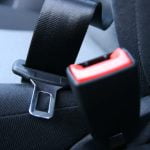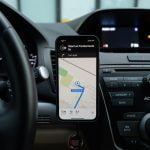Driving in a foreign country can be both exciting and daunting, especially if you’re renting a car. Known for its stunning scenery, ancient history and vibrant culture, Greece is a popular destination for travelers who want to explore its beauty at their own pace. But before you hit the road, it’s important to familiarize yourself with local driving rules and customs to ensure a safe and enjoyable experience. This guide will walk you through the most important aspects of driving in Greece as a foreigner renting a car.

A short guide on driving in Greece 🇬🇷
Traffic side

In Greece, vehicles drive on the right-hand side of the road. If you’re used to driving on the left, take some time to adjust and stay alert, especially around corners and intersections.
Speed limits

Speed limits in Greece vary depending on the type of road and location. In urban areas, the limit is usually 50 km/h (31 mph), while on motorways it can range from 80 to 130 km/h (50 to 81 mph). Pay attention to road signs, as they will indicate the speed limit for each section of road.
Traffic lights

Obey traffic lights as you would in any other country. A red light means stop and a green light means go. Do not turn right on red unless a special sign indicates otherwise.
Roundabouts

Roundabouts are common in Greece. Vehicles already in the roundabout have the right of way. Approach with caution, yield to those already in the roundabout and signal your intentions.
Right of way

In the absence of traffic signs or signals, vehicles approaching from the right generally have the right of way. However, this unwritten rule may not always be followed, so use caution and yield when in doubt.
Seat belt use

Seatbelts are required for all passengers in the vehicle, regardless of their seating position.
Child safety

Children under the age of 12 and shorter than 135 cm must use appropriate child safety seats. It’s the driver’s responsibility to ensure that child passengers are safely restrained.
Use of headlights

Headlights must be used at all times, even during the day. This improves visibility and ensures that other drivers can see your vehicle.
Telephone use

The use of a hand-held cellular telephone while driving is prohibited. If you must make a call, pull over to a safe place or use a hands-free device.
Alcohol limits

The legal blood alcohol concentration (BAC) limit in Greece is 0.05%. However, it’s wise to avoid all alcohol if you plan to drive, as even small amounts can impair your judgment and reaction time.
Road conditions

Greece offers a mix of well-maintained highways and smaller roads that may be narrower and more winding. Some rural areas may have potholes, so drive carefully and be prepared for unexpected road conditions.
Tolls

Tolls are charged on certain highways and bridges in Greece. Keep some cash on hand as some toll booths may not accept credit cards.
Fuel Availability

Gas stations are common in both urban and rural areas. Unleaded (95 and 100 octane) and diesel are readily available, but it’s wise to fill up when you see one, especially in more remote areas.
Documents required

When renting a car in Greece, make sure you have a valid driver’s license, passport and rental agreement. An International Driving Permit (IDP) is recommended if your license is not in Greek or English.
Emergency numbers

In case of emergency, dial 112 for general emergencies, 100 for the police and 166 for medical assistance.
Driving in Greece as a foreigner can be a rewarding experience, allowing you to explore the country’s diverse landscapes and rich history at your own pace. By obeying local traffic laws, remaining cautious, and respecting driving customs, you can enjoy a safe and memorable trip through this beautiful Mediterranean country.
FAQs about driving in Greece
Can I use my foreign driver’s license to drive in Greece?
Yes, you can use your valid foreign driver’s license to drive in Greece for up to six months. However, if your license is not in Greek or English, it’s recommended to carry an International Driving Permit (IDP) as well.
Are road signs in English or Greek in Greece?
Road signs in Greece are primarily in Greek, but many major roads and tourist areas also have signs in English to assist international travelers.
What should I do in case of a breakdown or accident in Greece?
In case of a breakdown, contact the car rental agency’s emergency number provided in your rental agreement. If you’re involved in an accident, call the police (dial 100) and your car rental company immediately. Obtain all necessary details from the other party involved and take pictures if possible.
Can I park anywhere in Greece?
No, you cannot park anywhere. Follow local parking regulations and look for designated parking areas, marked by blue lines for paid parking and white lines for free parking. Avoid parking in no-parking zones to prevent fines or towing.
Are there any specific requirements for driving in Athens or other major cities?
Driving in major cities like Athens can be challenging due to heavy traffic and narrow streets. Be prepared for congestion, use GPS navigation, and plan your routes in advance. Some cities also have restricted zones where only residents or authorized vehicles are allowed.
Is it common for drivers in Greece to use their horns frequently?
Yes, using the horn is quite common in Greece. Drivers often use it to signal their presence, express frustration, or communicate in various traffic situations. However, excessive horn usage might not be well-received, so use it judiciously.
Are there specific regulations for driving on Greek islands?
Regulations for driving on Greek islands are similar to those on the mainland. However, road conditions on some islands might be less developed, so exercise caution and drive carefully, especially on smaller, more remote islands.
Are there any environmental zones or restrictions for certain vehicles?
Some cities in Greece, like Athens, have implemented low-emission zones where only vehicles meeting specific environmental criteria are allowed to enter. Check local regulations and restrictions before driving in such areas.
Is there a requirement for winter tires or snow chains in Greece?
Winter tires are not mandatory in most parts of Greece. However, in regions with heavy snowfall, like northern mountainous areas, it’s advisable to use winter tires or snow chains during the colder months.
Can I pay traffic fines on the spot in Greece?
If you’re fined by the police, they might issue you a ticket that you can pay directly at a local bank. However, some fines might need to be paid through the official website or at a post office. It’s important to pay fines promptly to avoid potential issues.

















